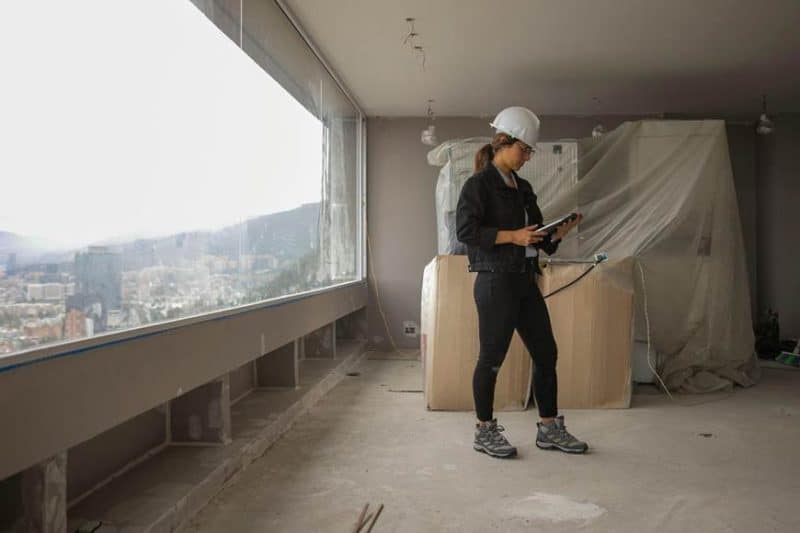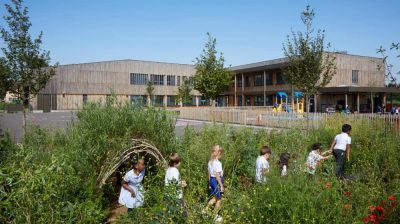
Modern home design is no longer defined only by aesthetics. Today, the best homes combine beauty with efficiency, comfort with sustainability. For architects, builders, and homeowners, creating a living space that feels good and functions responsibly has become the ultimate design goal. At the heart of this equation is the home’s HVAC system, which accounts for a significant portion of energy use and impacts indoor comfort more than nearly any other feature.
Managing these systems effectively has become critical to sustainable living. That’s why more contractors and homeowners are turning to field service management software to optimize HVAC operations. By ensuring systems are installed, maintained, and serviced with precision, this technology bridges the gap between sustainable design intentions and long-term performance.
Sustainability as a Core Design Principle
Sustainability is no longer a buzzword, it’s a guiding principle in architecture and interior design. Homeowners want spaces that not only look stunning but also tread lightly on the planet. For designers and builders, that means choosing energy-efficient materials, incorporating natural light, and creating homes that align with eco-friendly values.
Yet design decisions on their own aren’t enough. A high-efficiency HVAC system can quickly lose its advantages if it isn’t properly managed or maintained. Without structured oversight, even the most sustainable building plans can fall short once people move in. That’s where digital tools play a pivotal role: they help ensure that systems perform as intended, not just on day one but for decades.
The Hidden Energy Footprint of HVAC Systems
Heating and cooling account for nearly 40% of household energy use, according to the U.S. Department of Energy. This makes HVAC one of the biggest contributors to a home’s environmental footprint. Poorly maintained systems waste electricity, strain equipment, and shorten lifespans, ultimately negating the sustainability benefits of energy-efficient design.
Think of a well-designed home in Charlotte or Phoenix: beautiful windows, insulated walls, and a carefully selected HVAC unit. If the system is never serviced, filters clog, efficiency plummets, and energy bills skyrocket. Suddenly, the “green” design isn’t so green anymore. Proper management is what transforms theoretical efficiency into real-world performance.
How HVAC Software Supports Green Homes
Field service management platforms bring order to what can otherwise be a chaotic process. For HVAC contractors, these tools streamline operations in ways that directly support sustainable outcomes:
- Smarter Scheduling & Routing: Technicians are dispatched on efficient routes, cutting down unnecessary mileage and fuel consumption.
- Paperless Operations: Digital scheduling, invoicing, and service records eliminate the need for paper, reducing waste.
- Maintenance Reminders: Automated notifications ensure systems are serviced on time, keeping them running at peak efficiency.
- Data-Driven Insights: Software helps track patterns in energy use, equipment performance, and seasonal demand, insights that allow homeowners to make informed decisions about reducing consumption.
By weaving together efficiency and transparency, HVAC software empowers contractors and homeowners alike to actively contribute to greener living.
Enhancing the Homeowner Experience
For homeowners, sustainability often goes hand in hand with convenience. They want to live in eco-friendly spaces, but they also want comfort and peace of mind. HVAC software delivers on both fronts.
Homeowners benefit from:
- Transparent Communication: Real-time updates on technician arrival times.
- Digital Records: A complete service history accessible anytime, eliminating guesswork.
- Predictive Maintenance: Alerts before breakdowns occur, reducing emergency repairs.
- Integrated Smart Homes: Compatibility with connected devices like thermostats, giving homeowners better control of their indoor environment.
This experience elevates sustainable living from a concept to a daily reality. It’s not just about saving energy, it’s about creating a smarter, more comfortable home.
Architects and Builders as Partners in Sustainability

Architects and builders are uniquely positioned to influence sustainability. By recommending HVAC business practices supported by software, they can ensure clients see long-term value in their homes. Integrating digital service management into the design conversation strengthens green credentials and increases the likelihood that a project meets certifications like ENERGY STAR or LEED.
For builders, aligning with HVAC contractors who use digital platforms offers another layer of professionalism. It ensures smoother communication between trades, more reliable maintenance schedules post-build, and ultimately, homes that live up to their eco-friendly promises.
Challenges in Adoption
Despite the clear advantages, adoption of HVAC software isn’t universal. Some contractors remain hesitant, citing:
- Costs: Smaller companies may see software as an overhead rather than an investment.
- Learning Curves: Employees used to paper-based systems can resist change.
- Awareness Gaps: Many homeowners don’t know these tools exist, so demand is slower to build.
But these challenges mirror those faced in other industries, from construction to retail, where digital transformation initially met resistance. Over time, the ROI speaks for itself. Contractors who adopt software see faster billing cycles, fewer missed appointments, and more satisfied clients, while homeowners see consistent performance and savings.
HVAC Software and the Future of Home Design
The future of sustainable home design is deeply tied to smart technology. HVAC software is already streamlining maintenance, but the next wave will integrate even more deeply into how homes function:
- AI-Powered Energy Management: Predicting peak energy use and adjusting HVAC systems proactively.
- IoT Integration: Appliances and systems communicating with service providers in real time.
- Renewable Energy Alignment: Software optimizing HVAC performance alongside solar panels or geothermal systems.
- Predictive Alerts: Detecting issues before homeowners even notice, creating homes that are as proactive as they are sustainable.
In essence, the home becomes a living ecosystem, self-regulating, efficient, and deeply aligned with its inhabitants’ comfort.
Designing sustainable homes isn’t only about the materials chosen or the architectural vision. It’s also about how those homes are lived in, managed, and maintained. HVAC systems, as major energy consumers, require careful oversight to deliver on the promise of eco-friendly living.
By adopting tools like field service management software, contractors ensure that HVAC systems run efficiently, homeowners enjoy peace of mind, and architects see their designs live up to their green potential. In today’s design world, technology and sustainability are no longer separate, they are partners shaping the future of modern living.
Want to dive deeper into how technological innovation is shaping modern homes? Check out Home World Design’s article “The Modern Home Transformation: Embracing Smart Technologies” which explores how integrated systems, from automated lighting to voice-controlled appliances, are redefining comfort and efficiency in contemporary design.








